At this technological revolution level stands the gummy industry. Advances...
Read MoreDiscover the Key Ingredients and Techniques in the Loveless Cafe Biscuit Recipe for Beginners



If anything, the simple buttermilk biscuit possesses the power to capture the Southern heart and palate. Not many can claim to have perfected the art of biscuit-making quite in the way that the Loveless Cafe has, which also carries a legacy of delectable creations. But what is it that keeps aficionados coming back for more biscuits? Join us on a flavorful journey where we will uncover secrets surrounding the famous Loveless Cafe biscuit recipe. From a rundown on ingredients that make their biscuits fluffy and buttery to catch-at-home tips and techniques, this blog has all the pointers to baking like a professional. So strap in: these biscuits are not just a side; they are a tradition, an experience, and a taste of Southern hospitality.
What Makes the Loveless Cafe Biscuit So Special?

Understanding the Recipe Origins
The heart of the Loveless Cafe biscuit recipe is history and traditions, guaranteeing quality at every step. The origins of these famous biscuits date back to 1951, when Lon and Annie Loveless served breakfast and dinner to travelers driving along Highway 100 in Nashville, Tennessee. As for the recipe, it is said to be a secret recipe passed through the family generations to make sure that each biscuit carries the same mark of excellence that has been theirs for nearly half a century.
The biscuits are made extraordinary by the detailed attention given to each preparation step: fresh and perfect ingredients, namely flour, butter, buttermilk, with just a pinch of leavening, create the right balance in flavor and texture. A mixture of preparing methods, such as folding the dough for optimum flakiness to keep the fat cold for the cleanest and airiest layers, makes these extraordinary biscuits beyond regular baked goods. Everything sings of the softer side of Southern cooking- a food prepared with love and care, entwined with the land’s history and spirit.
By now, the Loveless Cafe biscuit has moved from being a roadside point of charm to almost a symbol of Southern hospitality. People come from afar to experience those fluffy, buttery biscuits. Be it honey, jam, or country ham- we’re talking about a recipe for a sure-fire recall of comfort, nostalgia, and gluttony- the biscuits will be forever embedded in the culinary folklore of Tennessee.
The Role of Buttermilk in Southern Biscuits
In the Southern biscuit tradition, buttermilk is regarded as a truly essential ingredient due to its contribution to the exceptional taste and texture. This mild acid taste complements and contrasts with the rich buttery flavor of the biscuits, giving it another dimension unreachable by just water or milk. The acidity of buttermilk reacts with baking soda or baking powder, which many biscuit recipes call for as leavening agents, to create carbon dioxide bubbles. These cells give the biscuits a light and fluffy interior, with a golden, tender crust that is characteristic of them. That’s the science behind the role of buttermilk, which has been around forever in Southern kitchens for generations.
Buttermilk also brings nutrition to set apart biscuit making. Its low-fat category and nature of probiotics are good for gut health while hydrating the dough; its creamy consistency binds well in the mixing, making biscuit handling easier without heavy or drying clay formation. Also, many Southern cooks firmly profess that nothing replaces genuine cultured buttermilk compared with any substitutes to keep this classic recipe accurate. Buttermilk has been the principle behind Southern biscuit-making in home kitchens or legendary roadside eateries; its pledge to texture, flavor, and history is dearly upheld as a significant hand in biscuit-making artistry.
Key Ingredients and Their Impact
Every essential ingredient in biscuit-making plays a critical role in ensuring the end product achieves an adequate balance between flavor, texture, and rise. Flour is usually the base for the recipe, and hence, it is generally made from soft wheat with a lower protein content that makes it possible to create tender, flaky biscuits. While all-purpose flour is usually considered more versatile, some prefer self-rising flour, which already has the leavening agent and salt mixed in.
Leavening agents, such as baking powder or baking soda, must be considered: they make the biscuit rise and help with the fluffy texture. Baking powder is commonly preferred in old-fashioned recipes because it does not require an acid for activation, unlike baking soda, which needs an acid-rich ingredient such as buttermilk. Incorrect amounts, however, may decrease the taste with a somewhat bitter nuance and an uneven rise of the biscuit.
Butter, shortening, or lard are the fats used to commercialize biscuits with flavor and texture. Butter contains water, which helps steam the biscuits lightly during baking, while lard or shortening gives more flakiness because of their higher fat content. The temperature of these fats is crucial; cold, solid fats work best because they mitigate overmixing and help separate the layers.
Milk or buttermilk is used to bind dry substances with a little moisture while also contributing to flavor. Buttermilk is famous for giving biscuits tangy complexity and reacting with leavening agents to help them rise. Truly fine biscuits are those made with fine-quality liquid ingredients.
Salt is a fortifier, ushering in and balancing the overall flavor profiles. Occasionally, a pinch of sugar is thrown in to remove any bitter taste, but of course, this depends on one’s palate and baking traditions in one’s region.
Each ingredient has its own character, and the symphony formed by all of them is the very nature of this comforting fare. By knowing how each ingredient affects a recipe, bakers can fine-tune and elevate their recipes to near perfection.
How to Make Loveless Cafe Biscuits at Home

Gathering Your Biscuit Mix Essentials
First, assemble those precious core ingredients that give Loveless biscuits distinctive texture and flavor. The base is all-purpose flour, which builds structure with softness. Baking powder and baking soda are both leavening agents, making for that nice, airy rise in the biscuits. The cold butter makes them rich and tender; the solid fat creates flaky layers in baking. The tang from the buttermilk gives flavor and moisture, reacting with the leavening agents to cause the fluffy rise. A bit of salt helps to tie the flavors together so that one does not overpower the subtle taste.
For the actual Loveless Cafe experience, go for high-grade ingredients. Fresh and local dairy and premium-grade flour are preferred to get that authentic homemade feeling. Being exact with the measuring and proper temperature use of these ingredients shall give you consistent results, which is your first step toward making fluffy biscuits.
Prepping the Dough for Perfection
First and foremost, the proper mixing procedure is essential for achieving optimum dough consistency. Begin by sifting your dry ingredients; in doing so, everything will be evenly distributed, and the baking powder or soda can adequately do its job to give the biscuits that delicate lift. Afterward, reach for the cold butter or shortening and incorporate it into the mixture. Using a pastry cutter or fingertips, work fast and gently to obtain a crumbly texture resembling coarse sand. Avoid overworking as it will affect the final texture of the biscuits. Once that is done, slowly add your chilled liquid, be it buttermilk or something similar, stirring just enough to bring the dough together.
At this point, the dough should feel a bit sticky but not overly wet. Pour it out on a floured surface and give it a couple of gentle kneads, two to three times. Do not knead too much because the more you do, the more gluten develops, yielding tough biscuits instead of soft and fluffy ones. Creating the dough with care will lay the groundwork for biscuits with just the right balance of flavor and texture.
Bake Like a Pro: Tips and Tricks
Keep Your Ingredients Chill: For the flakiest baked goods, butter, milk, or other perishable ingredients must be kept cold. The buttery shine of cold butter melts and creates steam pockets that give pastries, cookies, and pies a light and airy touch.
Measure Accurately: Baking is a science, and precise measurements are essential. Good weighing scales can help you more than anything else to gauge such parameters accurately, especially when working with flour. For instance, scooping directly from the flour bag with a measuring cup usually leads to excess flour, thus altering texture and taste.
Preheat Your Oven: Always preheat your oven to the required temperature. Placing your tray in a cold or half-preheated oven might result in an uneven process, thus affecting the rise and other characteristics. Obtain an oven thermometer if you have doubts about your oven’s temperature setting.
Use Parchment Paper or Silicone Mats: Lining baking sheets with parchment paper or silicone mats prevents anything from sticking to them and makes cleanup a breeze. They also distribute heat more evenly for consistent baking results.
Don’t Overmix the Dough or Batter: Avoid overmixing when making batter or dough for muffins, cookies, or bread. An overmix will engage the gluten in the flour and yield dense or tough baked goods. Mixing aims to combine the ingredients until they are just mixed.
Rotate Your Pans: Halfway during baking, rotate your trays to achieve even baking. This assures that each corner of your treats will be perfectly baked, especially if your oven is hotter on the right or left.
When you implement these handy tips in your kitchen, you will elevate your baking from good to extraordinary and prepare very fine treats with precision and confidence every time!
Create a Copycat Biscuit Recipe?

Choosing the Right Flour and Baking Powder
Selecting the correct flour for your biscuit recipe is not just a simple matter of preference; one must understand the link between the flour and the final texture. With its medium-range protein content, all-purpose flour is an ideal choice for making a tender yet firm biscuit. Use pastry flour if you want respectably lighter and flakier biscuits. For instance, biscuit recipes rarely call for bread flour as the high-protein content makes for heavier baked goods.
Also important is the selection of baking powder since it is the key leavening ingredient that imparts the fluffy rise to your biscuits. Double-acting baking powders are recommended for good results—they activate upon the initial mixing and undergo a second activation when heat is applied during baking. Also, remember to check its freshness every single time; it will not leaven biscuits if they are past expiration. Choose flour and baking powder, and you are guaranteed fabulous biscuits every time, in texture and height!
Secrets to Achieving Flaky Biscuits
Fat is perhaps essential in achieving irresistible flakiness in your biscuits. Butter is a highly favored choice because of the flavor it develops and the steam pockets formed with it during baking, which creates the signature biscuit layers. Best results are achieved by using cold butter, cut into even the smallest cubes, to ensure it does not melt into the dough prematurely. The goal is to keep the fats as distinct teeny bits in the dough that will steam in the oven and puff up the dough into thin, airy layers.
Therefore, a shortening or a room-temperature mixture of butter and shortening can be used. Since shortening melts at a higher temperature than butter, it is easier to work with and will yield more tender biscuits. Whatever fat you decide on, treat the dough gently so as not to over-incorporate the fat into the flour, thus lessening the flakiness. When ready to bake, you want full-on glistening globs of fat in your dough; they are the foreteller of flaky deliciousness.
Focusing on the best fat and carefully incorporating it will refine your biscuit-making skills further. Every bite will taste of smooth layers that show how pure science is blended with pure skill.
Finishing Touches: Brush with Melted Butter
The key to a desirable golden finish imbued with a gloss and flavor is to brush the biscuits with melted butter. When the biscuits are warm and fragrant from the oven, a light coating of melted butter helps uplift the taste and feel. The butter penetrates through thin layers of the biscuit, deepening their rich butteriness while keeping the outside invitingly crisp.
When applying the butter, use a pastry brush for uniform application. Unsalted butter is best if you want the basic flavor of butter, while salted butter can add a very faint essence of salt. You may want to go an extra step by mixing some crushed rosemary or thyme into your melted butter, or a quarter teaspoon of garlic powder for some bite. This should spice up the flavor and provide an alluring aroma for your biscuits.
After the biscuits have cooled slightly, a second brushing of butter indulges the layers a little, making them a little thicker. Although this extra brushing is an option, it genuinely turns your biscuit into a ravishing treat and heightens the flavor to the very last crumb. Brushing with melted butter serves as a finishing touch and takes homemade biscuits to another level in appeal and taste.
What Are Common Mistakes When Trying to Duplicate the Loveless Cafe Biscuit?

Overmixing the Dough
One of the most common errors when making the iconic Loveless Cafe biscuit is to overmix the dough. One of the secrets behind that tender, flaky texture is to treat the dough as gently as possible. Overmixing develops gluten into the flour, giving you heavy and chewy biscuits when they are supposed to be light and fluffy. So, all you want is for the ingredients to come together. A somewhat shaggy-looking dough that looks uneven is delicate and contributes to a tender crumb when baking.
Another thing to look out for is working with the dough at the wrong temperature. Warm fats would probably turn into overmixed or improperly textured biscuits. The cold butter or shortening you are to use is supposed to melt in the oven, turning into little steam pockets that get the flaky texture all well-baked biscuits are recognized for. Keep your ingredients chilled, and if you want to go the extra mile, do so for your mixing bowl! Once your dough is ready, start to be a little careful as to handling it; do not knead or re-roll too much- the gluten structure might toughen down and take away from the signature lightness of the biscuit. Such meticulousness can make the difference between turning simple ingredients into a biscuit masterpiece.
Using Incorrect Ingredients or Measurements
Using the wrong ingredient or incorrect measurements can be one of the chief reasons for a baking failure. Baking is a science; even slight variations in ingredient use can change the outcome undesirably. For example, home bakers often mix baking soda and baking powder in recipes. When baking soda is substituted for baking powder, remember that the baking powder contains an acidifying agent and a drying agent. In contrast, the baking soda needs acidic ingredients present in the recipe to react. If such a reaction does not occur, the fluffy texture might never come to life in the biscuits. Similarly, changing flour types, say bread flour instead of all-purpose flour, will affect texture, as bread flour’s high protein content will make for a denser, chewier final product than a light and tender biscuit.
Accuracy in measuring should also be held dear, for most recipes are unforgiving of even the slightest deviation unless enormous amounts of common sense are applied. Being careful when measuring the key ingredients will pay off in the long run. These ingredients include flour, butter, and buttermilk. Consider investing in a good digital kitchen scale; weighing ingredients rather than relying on volume measurements will prevent discrepancies caused by varying degrees of flour packing or incorrect leveling. Dry ingredients like flour require proper measuring of utmost importance to avoid getting dry and crumbly biscuits. In sum, consistency in flavor, texture, and quality will be yours to share with those who taste your work if you consciously measure your ingredients to the letter and follow the recipe precisely.
Baking Without Proper Preheat and Temperature Control
Oven preheating is necessary to bring the oven to the specified temperature as mentioned in the recipe so that the baking can commence. Not preheating or failing to keep the stated temperature results in poor and uneven baking with undesirable texture formation. Baking without preheating would thus mean placing your goodies in an oven heating up from its lower temperature, giving inferior rising and a somewhat dense, severely undercooked end product. Even slight temperature inconsistency can be a matter of life and death for delicate recipes that include, among others, pastries, soufflés, and cakes.
It is another thing that must remain highly regulated during baking. Many ovens never ensure temperature specifications; most of the time, older versions have malfunctioning internal thermostats, with the temperature swinging above or below the desired level. This could-run-your-edges-burnt-with-oil-rim-or-straw-crust-full-of-white-raw-inside-while-looking-parched-besides-fully-cooked. To aim for such states, use an extra oven thermometer to check for accuracy. You may also consider having your oven calibrated now and then for an optimal customer experience.
Preheating and temperature maintenance are not about precision; they are about preserving the baking chemistry attempted in every recipe. For example, a sure recipe could rely heavily on baking powder or yeast in a way that requires the right amount of heat at precisely the right moments to spur the chemicals into reacting. Skipping it, or temperature fluctuations, means you’re stopping this reaction from taking place properly, thus changing your creation’s texture, taste, and structure. Setting time aside for these crucial steps assures consistency and gratification in the baking experience.
How to Serve Your Homemade Loveless Biscuit

Pairing with Classic Southern Jam
There is no match for a reliable comfort food combining a warm biscuit with that iconic Southern jam! While serving homemade biscuits, I prefer jams with a buzzy, bold fruit flavor profile- strawberry, peach, and blackberry, to name typical examples. These fruity sugar-tart profiles have a slick stroke of sweetness and tartness to bear up adequately against a buttery, flaky biscuit. Experience-wise, I recommend warming the biscuit slightly before packing on the thick layer of jam. Warming it up sets the beautiful aroma and flavor of the marriage.
Consider the origin of your jams to cultivate even more magic between the flavors. For example, tart muscadine grape jam offers an irresistible and uniquely southern twist, whereas sweet and spiced peach jam can evoke the warmth of something grandma baked. Creamy butter then works in tandem to take your taste buds for an enchanting ride. If you want to go wild, small-batch or artisanal jams offer an exciting avenue to explore, often interjecting notes of spices, herbs, or honey alongside the obvious fruit flavors.
This high vote also manifests in its simplicity and versatility. So it works perfectly with breakfast on the deck, a fancy brunch spread, or an old-fashioned supper snack. Buffet it up different ways, or just serve it as a simple fluffy supper biscuit with rubbed jam on its own—it’s the Southern spirit and warmth captured in every delicious bite.
Maintaining Freshness and Texture
When I make and eat biscuits with jam, they need to retain freshness and texture- I always perform something simple but efficiently. First, it is critical to store the biscuits well to keep them soft. After cooling, I put them in an airtight box or tightly wrap them in aluminum foil to keep them from drying out. If needed to be stored for more than two days, I simply put them into the freezer and allow them to warm gently in the oven or microwave when it is time to enjoy. This way would always help to keep the fluffy texture.
The jam stays fresh through proper refrigeration and handling. I ensure that a clean spoon is used every time to scoop the jam out of the jar, thus avoiding contamination that reduces shelf life. Once opened, the jar is tightly closed and kept inside the refrigerator to maintain its rich taste and good consistency. I label homemade jam with the date it was prepared, so I stay aware of its freshness and try to use it while it is still in prime condition.
Then, serving becomes extremely important. Biscuits are warmed just before eating to help retain their soft, flaky layers. Don’t get carried away with the jam! Too much, and the biscuits start to become soggy—isn’t it better to have a nice balance wherein both can be enjoyed at their very best? These simple ways of doing things will ensure every bite is as excellent as the first, true to the comforting combination.
Presenting Your Southern Style Biscuits for Family and Friends
When I serve Southern-style biscuits to family or guests, I intend to create a warm, inviting atmosphere that celebrates the comfort of this traditional dish. The first step is arranging the biscuits on a beautiful serving platter, usually with a simple folded napkin that keeps them warm and adds a rustic flair. I feel presentation fuels anticipation for the meal, so I keep the biscuits in order with their golden, flaky tops catching the light.
I serve with the biscuits various spreads of butter, honey, and jams that might be homemade to suit all tastes. Sometimes, even include something a little savory, like whipped herb butter or pimento cheese, to mix things up. These spreads are then placed in small, attractive dishes that entice the guests to prepare each bite their way.
Even so, sharing biscuits is all about the occasion. I always make sure they are served fresh and warm while talking with guests, telling stories and reminiscing about when biscuits were fun to eat. That way, I connect people and give the whole biscuit-binding bunch around the table a personal feel. In my opinion, serving Southern biscuits is more about making memories than feeding people.
Reference Sources
- Loveless Cafe Biscuits – Mother’s Kitchen Blog
- Loveless Cafe Biscuit Recipe – Foodic Lab
- Loveless Cafe Copycat Biscuits – Copykat Chat Forums
- Biscuit Mix – Loveless Cafe Store
Frequently Asked Questions (FAQs)
1. What makes Southern-style biscuits special?
Southern-style biscuits boast a rich, buttery flavor and soft, flaky interior. Achieving their signature texture involves a handful of basic ingredients: flour, buttermilk, baking powder, and cold butter. Discerning from personal preference, combining these ingredients and traditional methods, such as gentle folding and minimal layering, will give the biscuits their characteristic rise and tenderness.
2. How can I achieve the perfect rise in my biscuits?
104 Baking the perfect rise into biscuits requires chilling the dough as much as possible and minimal handling.”104″ Butter is slightly chilled so that during baking, pockets of vapors are generated to make the biscuits airy and fluffy. Also, keep a sharp cutter handy; cutting through the dough without twisting ensures that biscuits have clean edges to rise evenly.
3. Can I make biscuits without buttermilk?
Yes, if buttermilk is unavailable, any milk may be substituted, provided an acid is used to curdle the milk and give that tanginess which buttermilk imparts. A tablespoon of either vinegar or lemon juice is commonly mixed with a cup of milk.
4. How might I store leftover biscuits?
Biscuits should be wrapped or placed in sealed containers only when thoroughly cooled off; otherwise, condensation will linger inside and make the fluffy texture soggy. For short storage periods of up to two days, keep biscuits at room temperature and later wrap them in plastic or aluminum for freezing. Whenever your leftovers are finished, reheat and serve them while still warm to regain their fluffiness.
5. Are there any variations of Southern-style biscuits?
For sure! Biscuits can be flavored with many different ingredients. Cheese, herbs, or even cooked bacon could be incorporated into the dough. Sweet varieties are common, with honey, cinnamon, or fruit, meaning biscuits are indeed solid for both savory and sweet cravings.
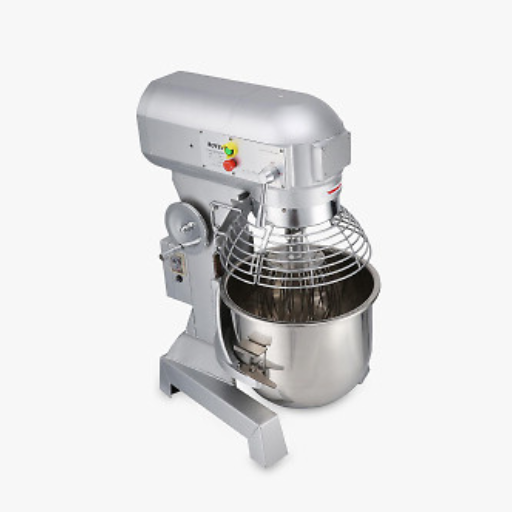
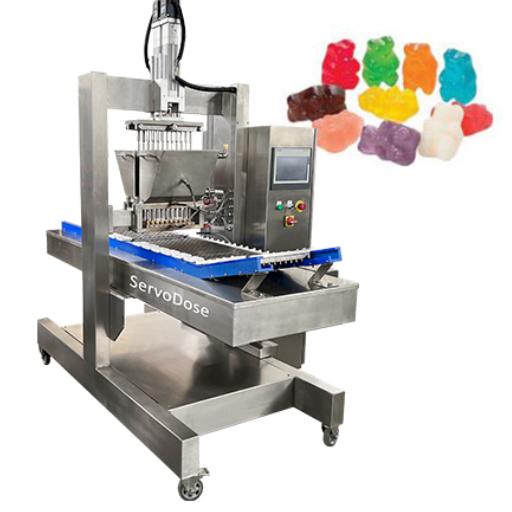
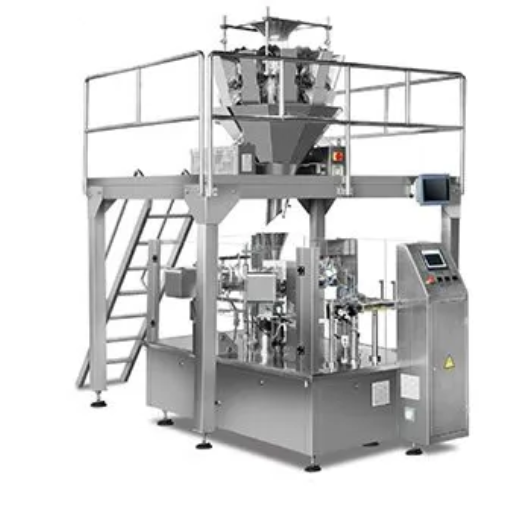
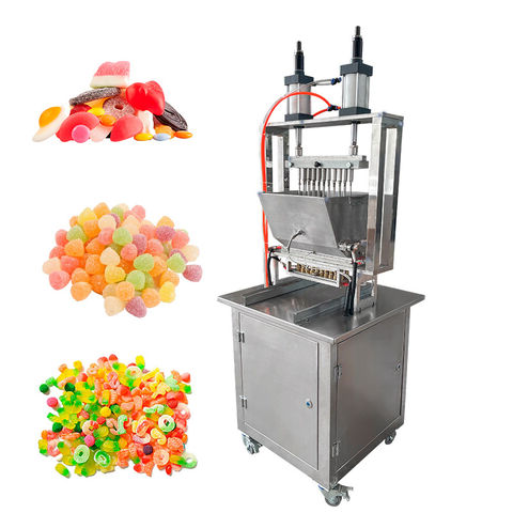
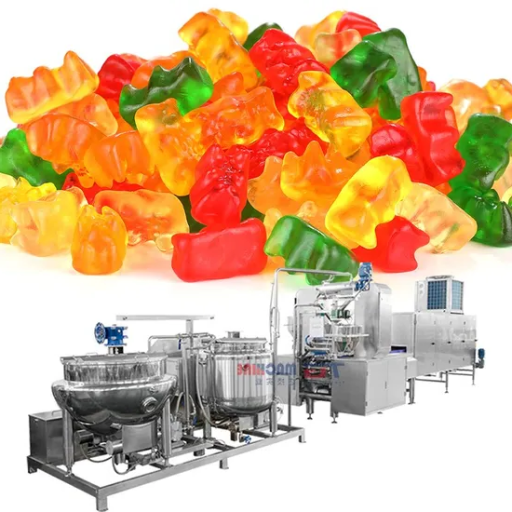
Blog Categories
Popular Blog Tags

Shanghai Fude Machinery Manufacturing Co., Ltd is a leading manufacturer of top-notch gummy and cookie making machines with more than 15 years’ experience in the industry. We provide creative equipment that ensures accuracy and speed while sharing intelligence with food producers. Shanghai Fude remains to be one of the most reliable companies for food machinery because of its dedication to perfection.



